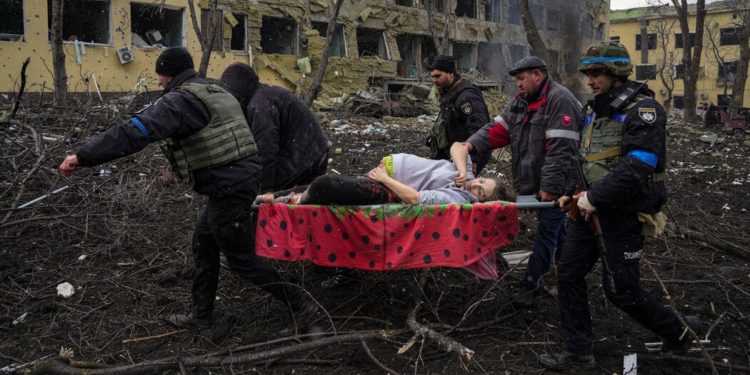By THE NEW YORK TIMES
President Vladimir V. Putin and other senior Russian officials should be investigated for war crimes after the destruction in the Ukrainian port city of Mariupol killed thousands of civilians, Human Rights Watch and several other organizations said Thursday at the end of a two-year investigation.
The Russian assault on Mariupol from February 2022 to May 2022, was one of the deadliest episodes of the war, trapping civilians in basement shelters and drawing international condemnation.
Human Rights Watch, a New-York based human rights group, reconstructed the chain of command of Russian forces and listed 10 senior officials, including Mr. Putin; Sergei K. Shoigu, the defense minister; and Gen. Valery V. Gerasimov, who most likely bore command responsibility for war crimes committed in Mariupol during that period. It identified at least 17 Russian or Russian-affiliated units that took part in the assault.
Human Rights Watch worked with Truth Hounds, a Ukrainian human rights organization, to conduct more than 200 interviews, mostly with displaced residents of Mariupol. It also used 3-D reconstructions and visual and spatial analysis by SITU Research for a detailed survey of the destruction of the city. Russia did not allow forensic experts to visit Mariupol.
The Russian government did not address the investigation’s findings publicly or respond to investigators’ inquiries, Human Rights Watch said.
The two-year study found that Russian air and artillery strikes on two hospitals, residential buildings and food storage and distribution sites violated international law.
There was no evidence of a Ukrainian military presence in or near bomb sites the report investigated, making the attacks unlawfully indiscriminate, investigators said. In some cases where there was a limited military presence, the attacks were unlawfully disproportionate, the report said. It also found evidence of unlawful blocking of humanitarian aid and evacuations and the forced transfer of residents to Russia, all of which can amount to war crimes.
The research found 93 percent of high-rise buildings in a central zone of five square miles were damaged or destroyed and at least 8,000 people died from fighting or war-related causes during the months of the assault. That number is lower than estimates by the Ukrainian government but is calculated from studying enhanced satellite pictures of the city’s graveyards, where many victims were buried in mass graves.
The real number of victims may never be known, the report’s authors said, because many remain missing and the Russian government has already removed much of the evidence as it bulldozed damaged buildings and started a campaign to rebuild.
“Occupying forces effectively erased the physical evidence at hundreds of potential crime scenes across the city,” said Ida Sawyer, crisis and conflict director at Human Rights Watch.
Testimonies and videos recorded by journalists and accounts from survivors and rescuers, however, revealed catastrophic damage from bombs that crashed through the floors of high-rise apartment complexes and killed families sheltering in underground basements. Bodies pulled from the wreckage were laid under blankets in the streets for collection and buried together in long trenches.
The Ukrainian government has reported that dozens of similar bombs have been used daily on other cities and towns that are under attack from Russian forces.
Human Rights Watch called for countries around the world to ban the use of explosives in populated urban areas worldwide.
“They should condemn and seek to end all use of explosive weapons with wide area effects in cities, towns, and villages — no matter where or by whom,” it stated in the summary of its report.
Oleksandr Chubko contributed reporting from Kharkiv, Ukraine.







Discussion about this post